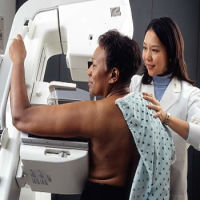A study published this week in Health Affairs reports that the US spends an estimated $4 billion per year on unnecessary medical expenditures for women between the ages of 40 and 59 who see their doctors for breast cancer diagnosis and treatment. The costs are related to mammograms that generate false alarms ($2.8 billion) and treatment for some slow-growing, low-risk breast tumours not likely to be life-threatening ($1.2 billion).
Among American women, breast cancer is the second most common cause of death; 41,000 deaths are associated with disease each year. Women are advised by the American Cancer Society (ACS) to begin receiving annual mammograms at the age of 40 as a preventive measure, since early detection improves survival. However, some believe regular screening for women in their 40s is not warranted, similar to the debate about early screening for prostate cancer in men.
It is not uncommon for mammograms to reveal anomalies that call for additional imaging or biopsies, a situation that is more common in women in their 40s compared to those in their 50s. The US Preventive Services Task Force therefore recommends that screening begin later, at age 50. False positives and overdiagnoses expose women to risky medical procedures and psychological stress. There is also an enormous cost tied to the screening tests and treatments.
"We're hoping that the financial cost of this problem will help cast into greater relief the human cost," said co-author Kenneth Mandl, a professor at Harvard Medical School. "The two messages together are powerful. The fact that this is not only a problem, but a very costly problem, we hope will accelerate the attempts to try to fix the screening practices.” Mandl’s fellow co-author, Mei-Sing Ong, is a research fellow at Boston Children’s Hospital.
While the results are eye-opening, there is little debate about the value of mammography, and the assumptions behind the study are being questioned by some. Richard Wender, in charge of prevention, detection and patient support efforts at ACS, criticised the report for its “very selective choice of estimates” related to rates for false positive and overdiagnoses.
"There was no attempt to balance the costs with the benefits," Wender said. "I strongly feel that every study that looks at the downsides of any screening test has to be balanced with the benefits.”
Mandel’s response was that there is no medical benefit to mammograms that generate false positives, and that his study is supported by existing research. Mandel and Ong’s study is based on data from 2011 through 2013 from a major US insurer. The data represent 700,000 women aged 40 to 59 from all 50 American states.
Source: Health Affairs
Image Credit: Wikimedia Commons



























